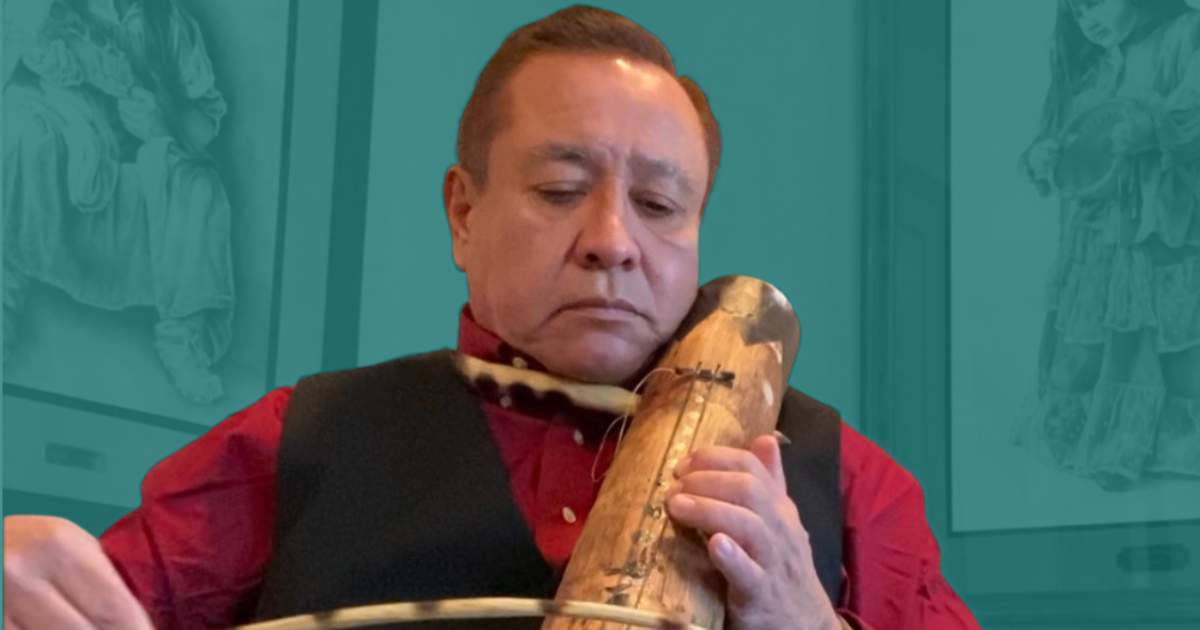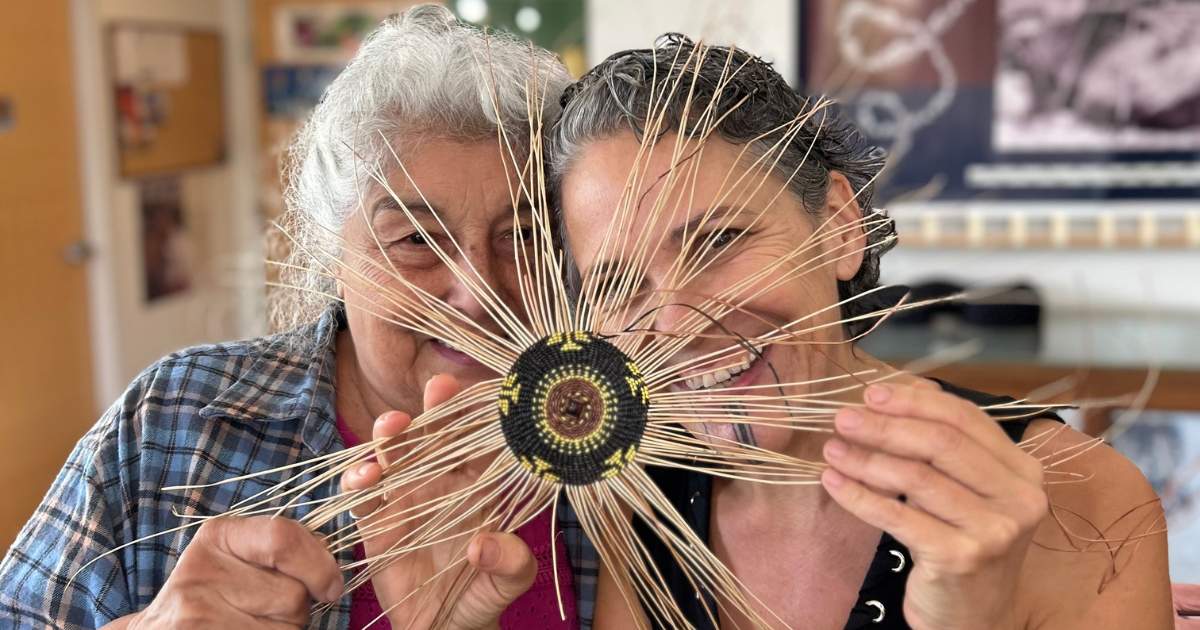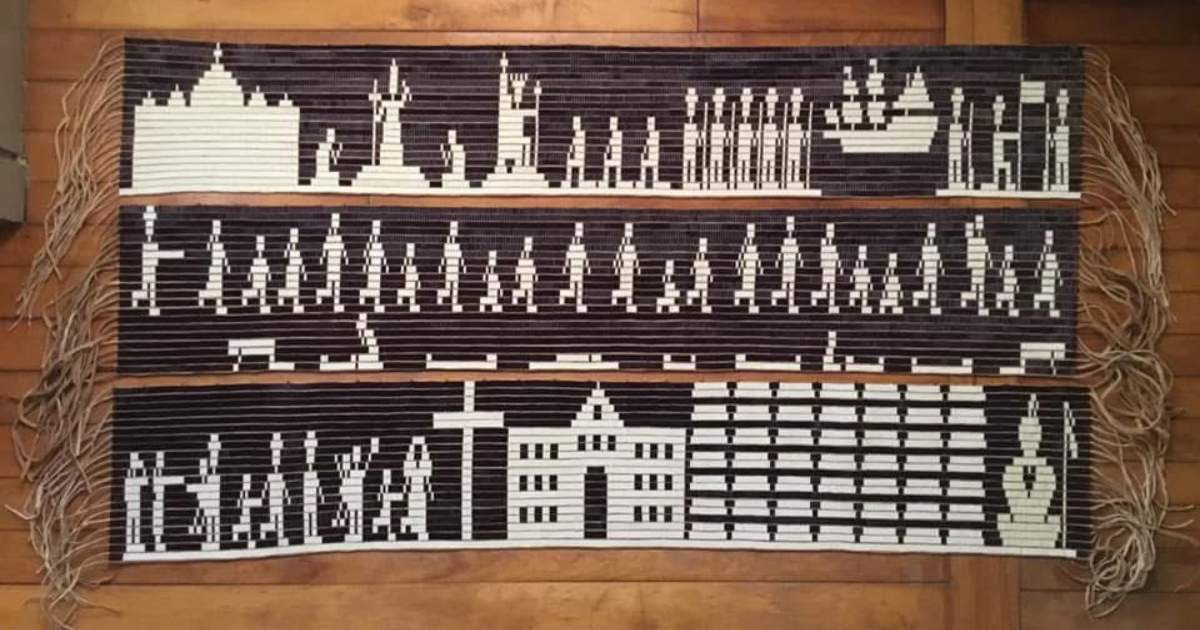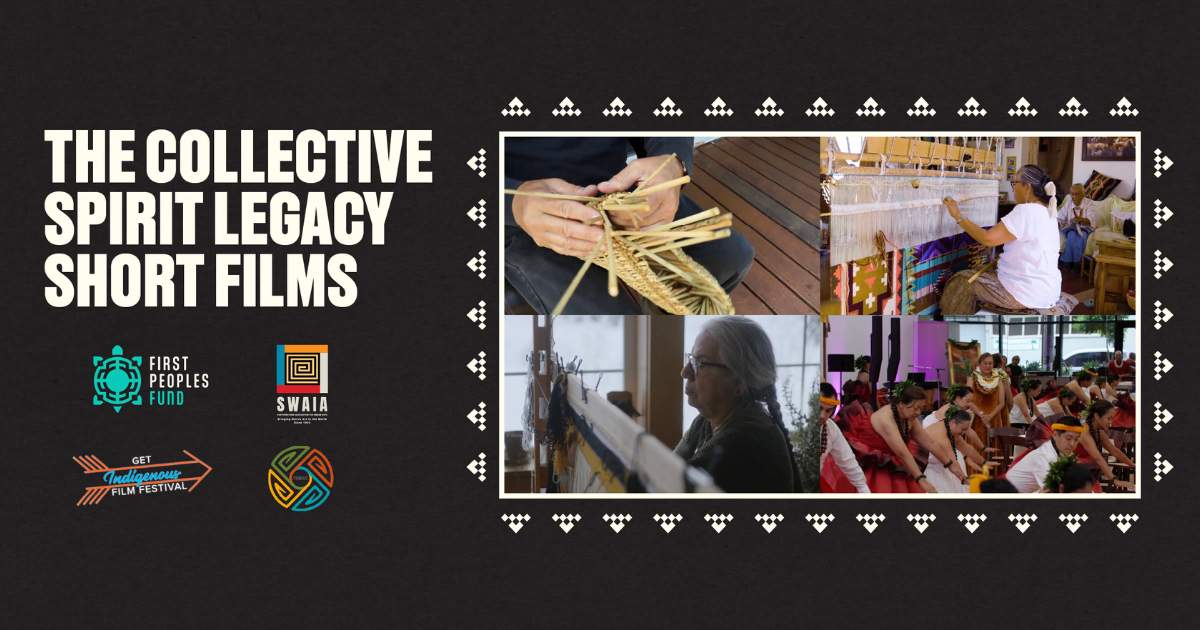
Community Spirit Held in These Hearts and Minds
Cultural richness lives within those who have dedicated themselves to practicing and teaching priceless ancestral knowledge and lifeways.
For the Jennifer Easton Community Spirit Awards (CSA) each year, First Peoples Fund selects exceptional culture bearers from among a national pool of applicants who are nominated by their community members.
The compassion and generosity of Community Spirit Award recipients enrich the lives of many now and for generations to come. We are so pleased to introduce you to our 2021 CSA honorees!
KEITH BRAVEHEART (Oglala Sioux) Kyle, South Dakota
Students of all ages fold sheets of paper origami style as Keith instructs them. Each fold tells part of a story as they create a buffalo skull.
The paper creation begins the narrative that Keith is conveying through his “Buffalo Nation: Creating Community” project, developed in part for the South Dakota Change Network and now supported by Keith’s CSA award. The initiative focuses on Lakota arts, culture, and communities while collaborating with other Native artists. “Buffalo Nation” includes a variety of art practices, workshops, activities, and events.
“I view this dedication as more than only means of building a project, but rather, as conducting a portion of my life’s work,” Keith says. “How I manage creativity may differ, but the responsibility of being an artist is always the same — to find the best expression, media, or practice to supplement the transference of our knowledge and life.”
2015 Artist in Business Leadership fellow Dyani White Hawk Polk (Sicangu Lakota / Rosebud Sioux) nominated Keith for the CSA. Since 2012, Keith and Dyani have worked in various capacities on a wide range of projects, and are currently collaborating on an upcoming exhibition led by Keith titled “Creation.Story.”
“He has worked tremendously hard to make space for and to support the development of Native artists through curatorial work, public art projects, exhibitions, and instruction in and out of the classroom,” Dyani says. “As I watched him interact with the students and his peers, I realized I was witnessing an elder in his youth.”
KELLY CHURCH (Gun Lake Band) Hopkins, Michigan
Traversing the swampy areas around Michigan, Kelly searches for black ash trees. After she finds one with bark growing straight, she checks the growth rings, looking for ones with a nickel’s width.
She isn’t alone in her quest.
“Black ash basketry teaches us to work together, as you cannot safely harvest a tree alone,” Kelly says.
After the tree is down, she takes the backside of an ax and pounds one end of the log to the other. The growth rings begin to release. Kelly splits the growth rings for basket material.
“Each skill from start to finish requires strength, patience, community working together, and a good heart,” she says. “The traditional teachings that my elders have so generously shared with me are used in our everyday Anishinabe lives. We use baskets to hold our pencils and paperwork in our offices. We use black ash winnowing baskets to shuck our corn. The traditional teachings I share are those that we have been so fortunate to have from thousands of years ago through today.”
Kelly’s nominator, Chris Pappan (Kaw Nation) (2016 Artist in Business Leadership fellow), shared how Kelly works with other basket weavers to exchange knowledge amongst several Indigenous communities
“She is the kind of person who treats people as relatives, even when she first meets you,” Chris says. “Through her teachings, we learn about her and her community and the importance of conserving those things that are precious to us all.”
GORDON ʻUMIALILOAALAHANAUOKALĀKAUA KAI (ʻUMI KAI) (Native Hawaiian) Honolulu, Hawai’i
Learning to make cordage from tree bark, cutting wood with a stone, making a fish hook from bone, making a basket out of leaves, boiling water in a wooden bowl — these simple tasks aren’t as simple as they appear. ʻUmi understands this well.
“Realizing how much effort and preparation goes into these things teaches us appreciation for our natural and cultural resources, and to value the ‘ike (knowledge),” ʻUmi says. “It instills in us a sense of pride for our ancestors and each other.”
ʻUmi holds the title of ‘Olohe Lua, a master of lua (Hawaiian martial arts). He was among a small core of dedicated practitioners who kept this practice alive. ʻUmi is also a carver of mea kaua (Hawaiian weaponry) and other tools used for fishing, war/fighting, games, food preparation, dance, ceremonies, ceremonial structures, and adornments. When possible, he uses native woods, bone, shell, ivory, and teeth.
“Most people create for beauty,” ʻUmi says. “But the creation needs to be functional, so my push now and going forward is to teach functionality to students.”
Nominator Kapulani Landgraf (Native Hawaiian) has known of ʻUmi Kai for over 20 years and, in 2012, invited ʻUmi to teach a Hawaiian Art class at Kapiʻolani Community College.
“He became our kumu (teacher/source) and advisor as a Hawaiian Cultural Practitioner and master artist within our community,” Kapulani says. “ʻUmi is a staunch traditional cultural practitioner in several art forms and embodies the Hawaiian values, beliefs, and customs into his teachings and the passing on of ancestral knowledge.”
KATERI MASTEN (Hoopa Valley, Yurok, Karuk) McKinleyville, California
At six years old, Kateri peered over at her great-aunt, watching her weave a mat. Her auntie took notice of Kateri’s curiosity and handed her sticks and roots. She showed Kateri how to do a basic start on a button.
Now, Kateri often sits on a stool in the shallow edge of a river with her materials and weaves. She is connected with the water as she works with willow and hazel sticks, willow roots, spruce roots, grape roots, bear grass, woodwardia, maidenhair ferns, buckbrush, alder bark, and Oregon grape root.
Kateri is a part of the Native Women’s Collective, a grassroots nonprofit that focuses on the continued revitalization of Native arts and culture. Her community extends to the many tribal nations in the region. She helps lead basket weaving retreats and cultural arts workshops, connecting with people from across the region, the state of California, and internationally with other Indigenous peoples.
“Weavers amongst our community are known to be kind, patient, knowledgeable, and nurturing,” Kateri says. “Our qualities greatly contribute to the health of our people, our territories, and our ceremonies with every stitch we weave.”
Assistant Professor and Department Chair of Native American Studies at Humboldt State University, Dr. Cutcha Risling Baldy (Hoopa Valley Tribe), nominated Kateri for the CSA. Cutcha says, “Kateri is a powerhouse and not only has continued to develop her master artist skills throughout her life; she has also prioritized community outreach and education.”
GLADYS THUNDER HAWK-GAY (Oglala Lakota) Kyle, South Dakota
Years ago, Gladys organized a run in Porcupine during a Tiospaye gathering for her grandson, who had completed the Los Angeles Marathon. The prizes for first, second, and third at her run were star quilts. One young man ran his heart out for 5 miles and took first place. He later explained he ran to win a star quilt to give to his grandfather, who was battling cancer.
“The quilt itself brings a sense of healing to the person receiving it during a troubled time,” Gladys says. “When a star quilt is wrapped around a person, they feel loved and cherished.”
Gladys is a passionate quilt maker who reflects her Lakota values of generosity, humility, and virtue. In her young married life, she began sewing quilts for the Mediator Episcopal Church Women’s group. At that time, the church was a central gathering place for the American Horse community, where Gladys raised her family and offered her time, leadership, and teachings to the church.
Archivist at Oglala Lakota College, Tawa Ducheneaux (Cherokee Nation of Oklahoma), nominated Gladys for the CSA.
“She has joked about retiring from quilting, but never says no to anyone, and often donates her quilts,” Tawa says. “Gladys would be considered to have ‘napé waketa,’ fine hands that create art. She is a Lakota treasure.”










































































































